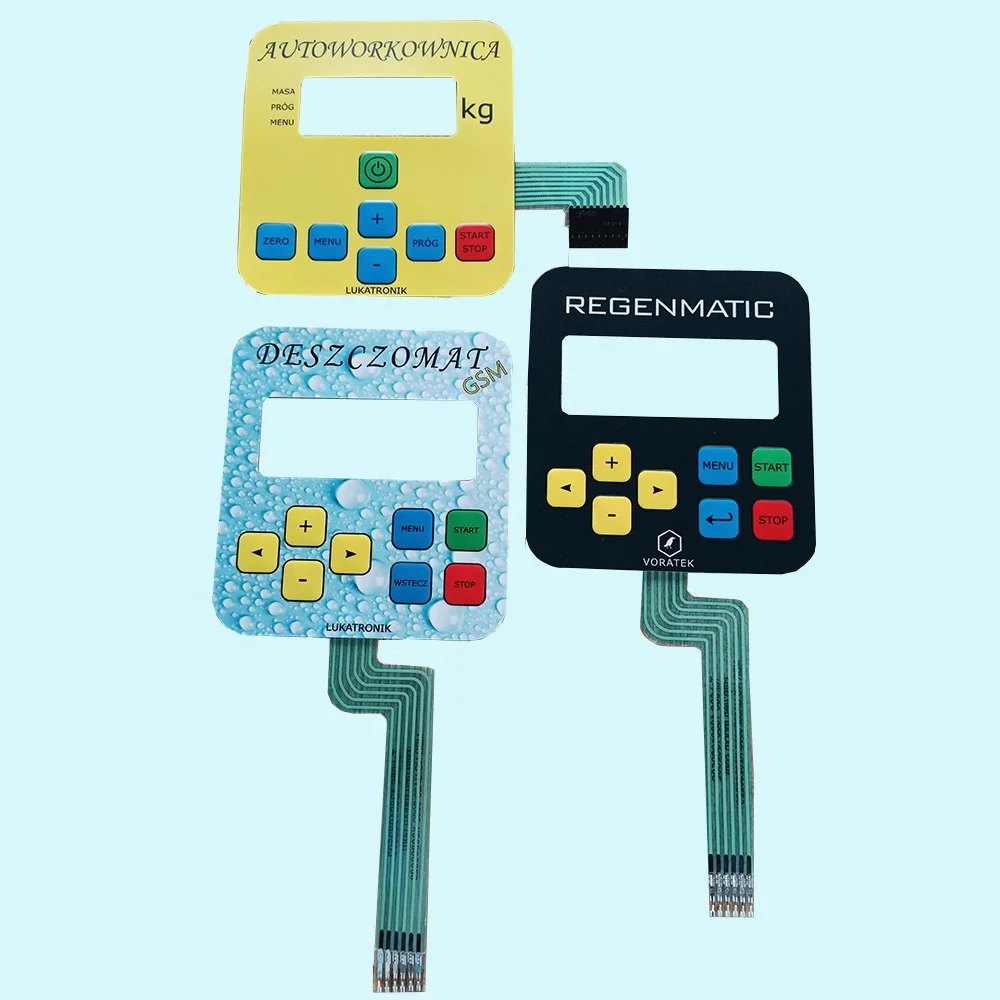How Membrane Switches Are Shaping the Future of Electronic Interfaces
How Membrane Switches Are Shaping the Future of Electronic Interfaces
Blog Article
Comprehending Membrane Layer Changes: The Trick to Resilient and Reliable Controls

What Are Membrane Switches?
Membrane layer buttons are an innovative solution in the world of interface modern technology, combining performance and style flawlessly. These tools work as an interface between users and electronic systems, integrating a number of elements into a small style. Normally created from adaptable, slim layers of products, membrane layer buttons are created to reply to touch, making it possible for individuals to engage with equipment and digital gadgets efficiently.
The main aspects of a membrane switch consist of a published circuit layer, visuals overlay, and a spacer layer that stops unexpected activation. The graphic overlay can be personalized to reflect brand identification or customer preferences, enhancing aesthetic appeals while making sure functionality. Membrane buttons are generally used in different applications, including clinical tools, consumer electronics, and industrial tools, owing to their longevity and resistance to ecological aspects such as moisture and dirt.
Among the essential advantages of membrane layer buttons is their capability to endure wear and tear, making them excellent for high-traffic settings. Furthermore, they are lightweight and call for very little space, permitting for ingenious styles in item advancement. Overall, membrane layer changes stand for a reliable and useful selection for contemporary electronic user interfaces, marrying modern technology with user-centric style principles.
Just How Membrane Layer Switches Over Work
The procedure of membrane changes hinges on a basic yet reliable mechanism that equates individual input right into digital signals. When a user presses the switch, the top layer warps, permitting a conductive element in the circuit layer to make contact with a matching conductive pad on the bottom of the visuals overlay.
The design of membrane switches can vary, however they often incorporate domes or tactile aspects to supply responses to the customer, boosting the overall experience - membrane switch. The materials used in membrane switches, such as polyester or polycarbonate, add to their sturdiness and resistance to ecological variables, including moisture and dust. Furthermore, the printed circuits are generally encapsulated, which safeguards them from deterioration gradually.
Advantages of Membrane Layer Switches

In addition, membrane layer buttons are known for their sturdiness. Built from durable products, they are immune to dirt, dampness, and physical wear, which significantly extends their lifespan compared to conventional mechanical switches. This sturdiness makes them especially appropriate for high-traffic atmospheres and applications needing durability.
One more considerable benefit is the ease of cleaning and upkeep. The smooth surface area of membrane layer switches over lessens dust build-up and is typically unsusceptible spills, making them optimal for settings that require frequent sanitization.
Moreover, membrane layer buttons use a streamlined profile, leading to a thinner design that can be incorporated right into different devices without including mass. This function not only enhances the aesthetic appeal yet additionally adds to an extra ergonomic item style.
Applications of Membrane Switches
Easy to use and flexible, membrane layer buttons discover applications across a vast variety of industries, consisting of clinical devices, customer electronics, and industrial tools. In the medical field, these buttons are essential to tools such as analysis equipment, person tracking systems, and infusion pumps, where integrity and simplicity of cleansing are important. Their ability to withstand extreme environments and keep capability makes them perfect for such applications.

In customer electronics, membrane buttons are made use of in products like microwaves, washing devices, and push-button controls - membrane switch. Their smooth layout enables user-friendly interface, enhancing the general customer experience while offering longevity and resistance to tear and use
Commercial YOURURL.com tools also takes advantage of membrane layer buttons, particularly in control panels for machinery and automation systems. These switches use defense versus dust and moisture, making certain regular performance in challenging atmospheres. Their customizable features allow producers to tailor them to particular operational requirements, improving effectiveness and performance.
Selecting the Right Membrane Change
When choosing a membrane switch, it is important to think about different aspects that influence performance and suitability for specific applications. The key factors to consider consist of ecological conditions, tactile feedback, durability, and layout requirements.
First, analyze the operating setting; buttons subjected to moisture, chemicals, or severe temperature levels call view for certain materials to guarantee longevity and functionality. Next off, examine the requirement for tactile feedback. Depending on user interaction, some applications might take advantage of a tactile feedback to validate activation, while others may favor a non-tactile style for aesthetic factors.
Longevity is an additional essential aspect; membrane layer switches need to be created to endure frequent usage, impacts, and abrasion. Make certain the picked switch can sustain the expected lifecycle, specifically in high-usage situations.

Final Thought
Finally, membrane switches work as necessary elements in the design of trustworthy and long lasting control systems across numerous markets. Their compact style, combined with durable building and customizable attributes, improves customer interaction while ensuring durability sought after settings. The flexibility of membrane layer changes permits for tailored remedies that satisfy details operational demands, reinforcing their value in modern innovation. As industries continue to advance, the significance of incorporating effective membrane button solutions can not be overemphasized.
Membrane changes represent an essential aspect of contemporary user interface layout, mixing functionality with resilience in different applications.Membrane layer buttons are an innovative solution in the realm of user interface innovation, incorporating capability and design perfectly. Commonly constructed from versatile, thin layers of products, membrane layer switches are designed to respond to touch, allowing users to engage with equipment and digital tools properly.
The layout of membrane layer buttons can differ, however they commonly integrate domes or responsive aspects to offer comments to the individual, improving the overall experience.In conclusion, membrane switches over serve as go right here crucial components in the style of sturdy and trusted control systems across different industries.
Report this page